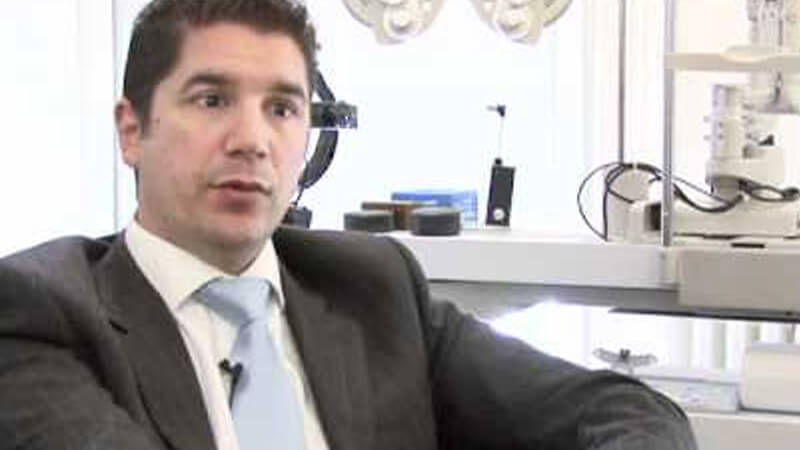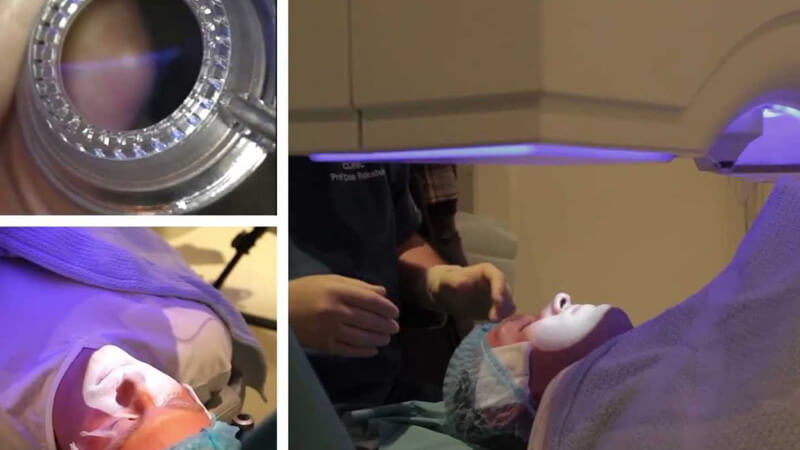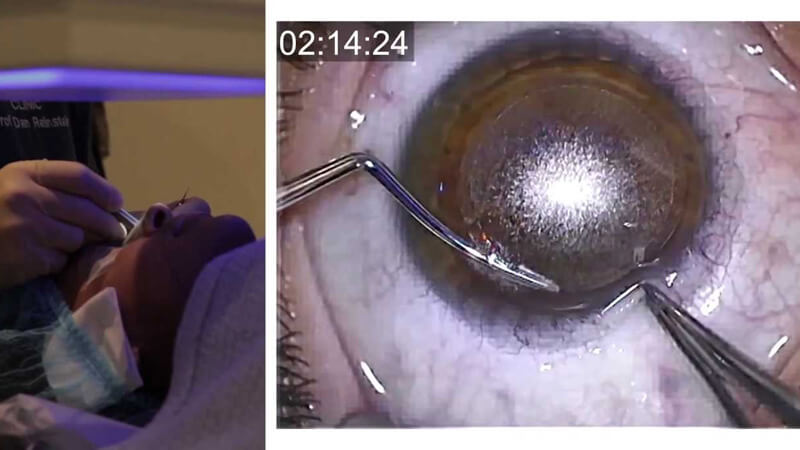Guide: PRK/LASEK vs LASIK vs SMILE Pro Laser Eye Surgery
Despite there being a seemingly endless list of laser eye treatments to choose from, when it comes down to it, there are actually only three main types of laser eye surgery you need to know: PRK/LASEK, LASIK, and SMILE Pro
Treatments such as UltraLASIK, Accu-wave LASIK, Custom LASIK UltraLASIKplus, Zyoptix and Wavefront LASIK, are simply brand names that clinics think up in an attempt to differentiate what is effectively the same, albeit packaged slightly differently, treatment.
They often do this by taking a treatment such as LASIK and then offering a technology, such as a wavefront measurement, as an optional extra. Such technology that can improve the treatment should be available for everyone and included in the standard cost of the treatment. But some clinics see it as a way to charge more — and, therefore, it can be a clear sign of what type of clinic you’re dealing with.
So, if underneath it all there are only three main types of laser treatments (excluding PRESBYOND® Laser Blended Vision), then what’s the difference between them? And if it is so simple, why can’t there just be one treatment simply called ‘Laser Eye Surgery’?
No matter what the type of treatment, Laser Eye Surgery works in pretty much the same way. It uses lasers to reshape the tissue, or stroma, that makes up the body of the cornea, the front window of the eye.
By doing so, it makes the cornea either steeper of flatter depending on the prescription treated, allowing it to bend and focus light more accurately on to the retina and eliminate refractive errors such as shortsighted and longsightedness.

But there is part of the procedure that is very different in each: the method used to get to this tissue within the cornea. There is a layer of skin, called the epithelium, on the surface of the cornea, which is constantly regenerating. For laser eye surgery to work, the epithelium needs to be removed or lifted out of the way to expose the stromal tissue. The way that this is doneis the distinguishing factor between the big three laser eye treatment types.
The Main Difference Between PRK/LASEK, LASIK, and SMILE Laser Eye Surgery
The epithelium is the eye’s invisible barrier to the elements that prevent bacteria and debris from entering the eye. It is incredibly strong, incredibly thin, and possesses the incredible ability to repopulate every 7 to 14 days.
In PRK — a type of ‘surface’ treatment very similar to LASEK — the epithelium is completely removed. The laser eye surgeon is then able to reshape the permanent layer underneath.
Following this, a contact lens is applied as a bandage to allow the epithelium to re-grow underneath the contact lens and re-populate the surface of the eye.
LASEK is another form of surface treatment where the epithelium is removed, but rather than being discarded, it is just temporarily pushed to one side.
The permanent layer underneath is then reshaped and the epithelium is moved back. A contact lens is again applied to the surface to protect it while the new layer re-populates underneath.
Unlike PRK/LASEK, LASIK is not a surface treatment, but works by creating a thin flap that includes the epithelium and a small part of the stroma, the permanent tissue. This allows the surgeon a doorway for re-shaping the permanent layer, and as the door is shut afterwards (the flap is replaced), it means no contact lens is needed and only the edges of the flap have to seal over.
If LASIK creates a doorway in the epithelium, SMILE creates a keyhole. SMILE works by creating a tiny connected tunnel from the surface, through the epithelium and down to where the target tissue can be removed. With minimal disruption to the epithelium, there is little to repopulate and the eye begins to heal almost immediately.
OK, now you know why there are three main types of laser eye treatments, let’s take a look at the pros and cons of each, and find out how they differ from one another in everything from comfort and safety to visual acuity and recovery.
The Grandparents of Laser Eye Surgery: PRK and LASEK
“With PRK we are able to treat all refractive errors. We are able to treat the full range of myopia, astigmatism and long-sighted treatments, hyperopia. However, it is less predictable for hyperopia when compared to short-sightedness, myopia and astigmatism.” —Mr Glenn Carp
PRK (Photo-Refractive Keratectomy), is the original laser vision procedure which surgeons have successfully used to treat hundreds of thousands of patients since the 1980′s.
PRK is significant because it was the first Laser Eye Surgery treatment to use the excimer laser, an ultra-precise alternative to traditional scalpel-based refractive surgery procedures such as Radial Keratotomy (RK), which surgeons rarely perform today. LASEK was introduced as an alternative form of surface ablation, with the hope of reducing postoperative haze, speeding up visual recovery, and decreasing postoperative pain. However, scientific studies have found no evidence for any difference between PRK and LASEK.
Generally, PRK and LASEK should only be used when it’s not possible to use LASIK. Whilst PRK and LASEK produce good results in the correction of a full range of prescriptions, including myopia, hyperopia, presbyopia, and astigmatism, the advantages of LASIK make it an all-round more effective and safer procedure.
The Pros of PRK/LASEK Laser Eye Surgery
Better Option for Some: PRK/LASEK is not as common as it used to be. Some patients, however, can benefit from it if they have co-existing eye issues that may be treated at the same time as correcting the vision, e.g. scars and loose surface epithelium.
The Cons of PRK/LASEK Laser Eye Surgery
Recovery Time: In PRK/LASEK, rather than creating a small flap to access the tissue underneath like in LASIK, the entire outer layer of the cornea is rolled to one side. As it takes several days for the outer layer to repopulate the surface of the eye, the recovery period is the longest of the three.
Safety and Comfort: Although the treatment itself is pain-free, PRK/LASEK patients are likely to experience discomfort or irritation in the seven days following the procedure. This is an expected part of the healing process, and thus some clinics will provide pain relief eye drops.
The Star of The Laser Eye Surgery World: LASIK
“There are essentially two groups of Laser Eye Surgery treatments. There is LASIK, which involves creating a flap in the cornea and there are surface treatments, which we know are PRK, LASIK, Epi-LASIK etc. The main difference between the groups is the healing time. The results themselves are pretty much the same three months down the line but it is how you travel, how your journey is in the interim that makes a big difference and LASIK offers a very quick healing time.” —Mr Glenn Carp
In part due to the significant improvement it made on PRK/LASEK, LASIK (Laser-assisted in situ keratomileusis) has skyrocketed to become not just the most popular Laser Eye Surgery treatment, but one of the most popular elective procedures in the world.
As mentioned above, the key difference between LASIK and PRK/LASEK is that, instead of removing the surface layer of the eye, an ultra-thin hinged flap is created to allow the laser treatment to be made, after which, the flap is simply closed like a door.

By returning the flap to its original position in this way, it’s only the edges of the flap which need to heal. The recovery time is, therefore, a fraction of the recovery time of PRK/LASEK — the vast majority of LASIK patients are ready to go back to work within 24 hours of having Laser Eye Surgery.
The Pros of LASIK Laser Eye Surgery
Recovery Time: As the surgeon makes a small flap in the outer layer of the cornea, it’s only the edges of the flap that need to heal. Therefore, LASIK patients spend less time in recovery, often returning to their normal routines within a day or two.
LASIK can Treat Wavefront: Wavefront error makes up around 5 percent of our vision, accounting for the finer quality aspects beyond common refractive errors such as long-sightedness, short-sightedness, and astigmatism, which are the main focus of glasses and contacts.
The Cons of LASIK Laser Eye Surgery
Treatment Options: As the world’s most popular Laser Eye Surgery treatment, the marketplace for LASIK is swamped with offers, deals, variations, and added extras. This can make it difficult to know what you’re getting. Choose a clinic with transparent and upfront fees, and be prepared with the questions you need to ask the surgeon.
Safety and Comfort: Patients may experience some irritation and discomfort for up to 24 hours after surgery. This is minor and is generally managed with lubricating eye drops.
Minor Side Effects: Patients generally experience a small number of side effects in the 24 hours immediately following the procedure. This can include dry eyes, night vision disturbances, and starbursts and halos, and are typically minor and easily managed with lubricating eye drops.Dry eye symptoms typically last for 3 to 6 months.
A Revolution in Laser Eye Treatments: ReLEx SMILE Pro
“Generally speaking, traditional Laser Eye Surgery can only correct prescriptions up to a maximum of between -8 and -10… With ReLEx Laser Eye Surgery treatment at London Vision Clinic, people with thin corneas and those with prescriptions of higher than -10 can be treated, because we do not make a flap from the corneal surface.” — Prof Dan Reinstein
ReLEx (refractive lenticule extraction) SMILE (small incision lenticule extraction) is the newest approach in laser eye surgery. Introduced in 2011, the procedure — known as SMILE for short – is minimally-invasive and completely ‘flap-less’, involving nothing more than a tiny keyhole incision being made in the cornea.
SMILE can do this thanks to the state-of-the-art Carl Zeiss VisuMax laser, which is used to perform the procedure from start to finish. The VisuMax is currently the only femtosecond laser with the precision to be able to perform SMILE. It is also the laser with the lowest increase in pressure in the eye, low enough that the patient feels nothing during the procedure. With guidance from cutting-edge 3D placement, the laser places a series of pulses within the cornea, forming bubbles less than 1/1000th the width of a human hair, outlining the tissue that needs removing, and creating a tiny connecting tunnel through which it can be drawn out.
This entire process takes less than four minutes to perform.

This makes the treatment not only a lot smoother, quicker, and more comfortable for the patient, but the healing time is even shorter than that of conventional LASIK, the temporary side effects are minimised, and it is suitable for even patients with very high prescriptions, drier eyes, and thinner corneas.
The Pros of ReLEx SMILE
Treatment and Recovery time: As the latest of the three treatments, SMILE transforms Laser Eye Surgery into a minimally invasive procedure that can be performed in a matter of minutes. With the tissue being accessed and removed via tiny connecting tunnels in the outer cornea, no significant healing needs to take place. Add this to the short treatment time, and you have an incredibly convenient and effective treatment that is favourable for athletes, business people, and anyone with a busy, active schedule.
Safety and Comfort: SMILE takes Laser Eye Surgery to another level of patient comfort. SMILE offers approximately half the amount and duration of dry eye over the recovery period. It also retains strength in the cornea as the flap is replaced by a keyhole.
Suitability and High Prescriptions: Due to the keyhole nature of the procedure, many patients who are told they are unsuitable for other treatments may be suitable candidates for SMILE. Many patients are unsuitable for LASIK as they simply don’t have a thick enough cornea to remove tissue after making a flap. As ReLEx SMILE uses an extremely precise and minuscule hole at the side of the eye, it leaves the front part of the cornea intact and allows for more demanding prescriptions to be treated.
The Cons of ReLEx SMILE
Limited Prescriptions: Although it can treat very high prescriptions, at the moment, SMILE is only available for shortsightedness and astigmatism. The treatment of longsightedness has been developed and is to be released in the near future.
Availability: As an up and coming laser eye treatment, SMILE Pro is only available at a select few clinics in the UK. London Vision Clinic was the first to introduce the procedure in the UK back in 2011, as it was developed by our founder Prof Reinstein.
At first, choosing the right laser eye treatment can seem a monumental task. But when it comes down to it, there are only really three treatments most people need to be aware of — more like two today — and what’s best is if you go to a high quality clinic, the choice is made much simpler as the best comes at the same price.
The parting message is that the old-timer — PRK/LASEK — has largely been made redundant today but may still be a great option if you’re unsuitable for newer surgeries. LASIK retains the title of most popular and sought after treatment, but only for the time being. As more clinics are beginning to perform SMILE, a greater number of people are becoming aware of its many benefits, SMILE is gaining traction, and as a result, will likely soon take the top spot as number one. A total of 2 million SMILE® surgeries were completed worldwide by April 2019.


